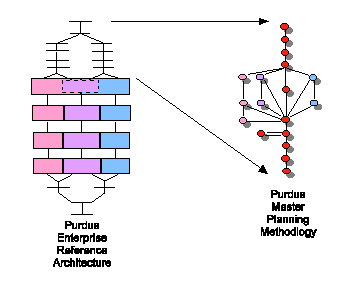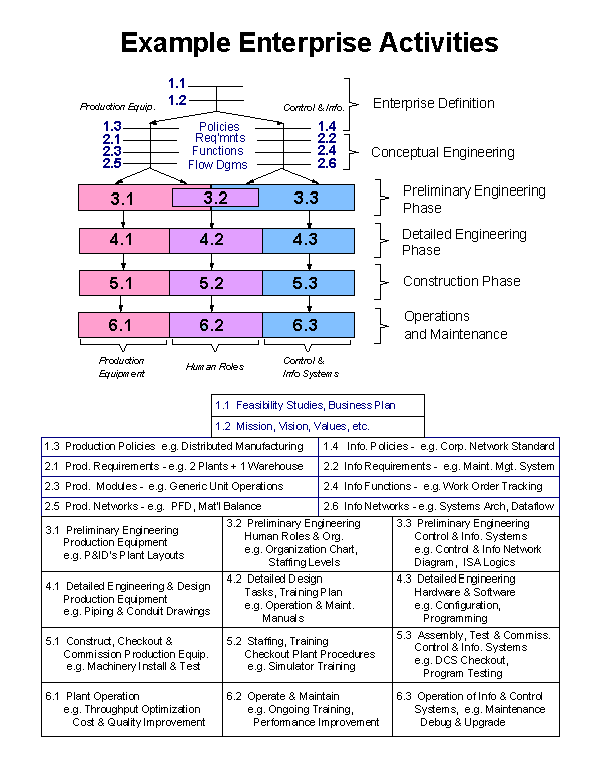
PERA provides a common methodology for Enterprise Master Planning, however technical standards, terminology, and work processes will vary widely between different industries. PERA is therefore designed to encompass existing methodologies for Engineering Design, Operations, and Maintenance in that industry.
Since PERA represents the full life cycle of the Enterprise, interfaces with existing Enterprise documents and tools may be accomplished at the beginning and the end of each phase. As the Enterprise is developed, and increasing levels of detail are defined, it is possible to see how each of the contributing "Principal Roles" and their "deliverables" are related to the others.
Since PERA is a GERAM, it can be used to represent any enterprise, including the deliverables, tools, products, etc. which are used in different industries.

The following example Design phasing and deliverables are based upon a typical process industry facility. A project executed by an EPC (Engineer, Procure, Construct) contractor might therefore include the following at the different phases of the project.
Note that the above is not intended to be a complete list of procedures employed at each phase of the project, but rather indicates how PERA relates to existing procedure sets. By understanding how Production Facilities, Control and Information Systems, and Human and Organizational design methodolgies relate to each other, it is possible to define interfaces and information exchange requirements. If this information exchange is not carried out at the correct points in the design process, major schedule and cost implications will result.
Although formats of each of the three architecture components (Facilities, People and Information Systems) vary, the intent is the same: to provide a coherent and coordinated representation of the enterprise during that phase. It is also true for all three architecture components, that additional detail is added in each sucessive phase by building on the information defined in the previous phase. Late information or decisions will result in rework, increased costs and delays.
The following diagram shows typical "deliverables" or documents produced at each phase of the Enterprise that must contain design and procurement information for control and information systems and networks.
